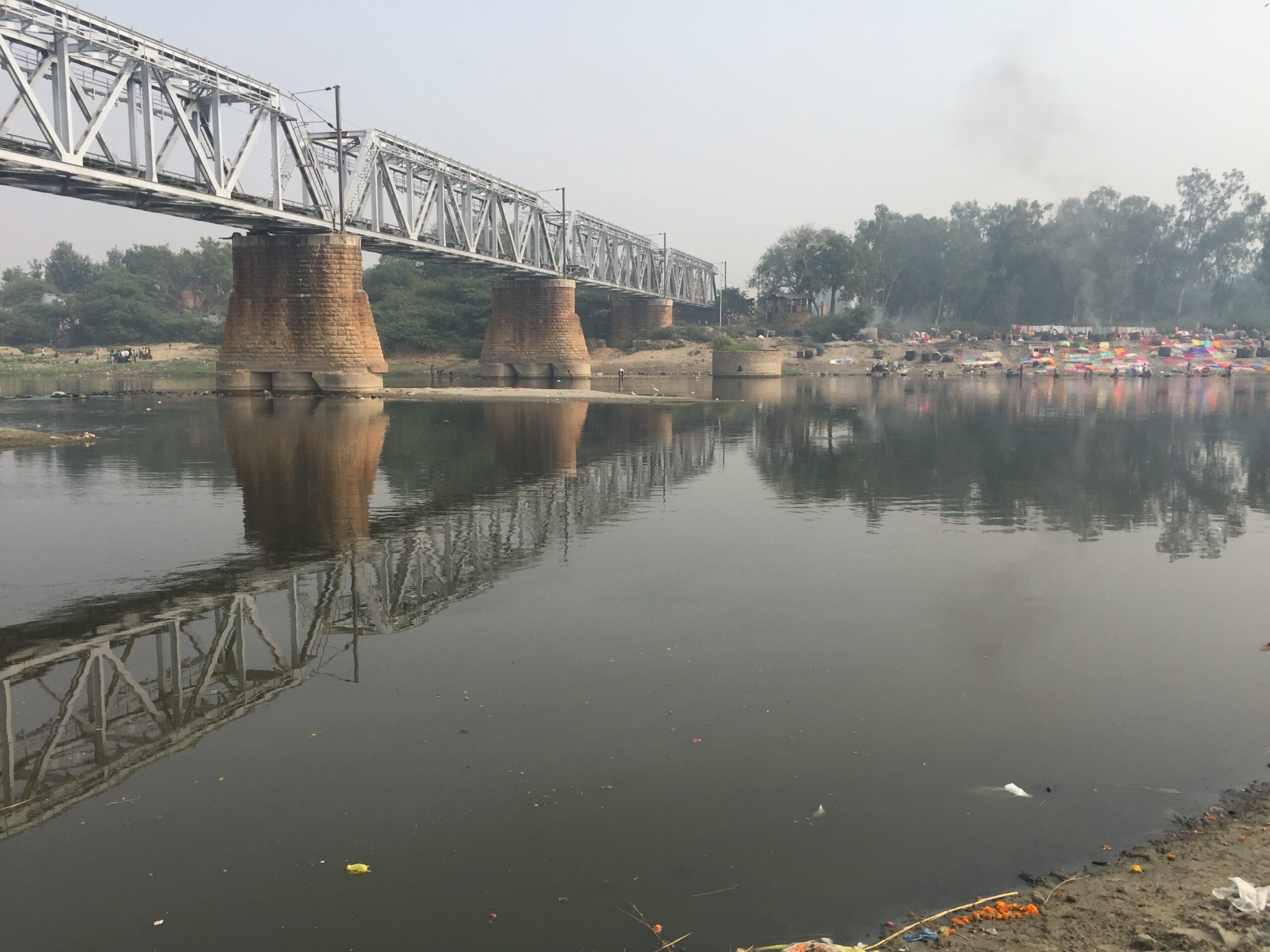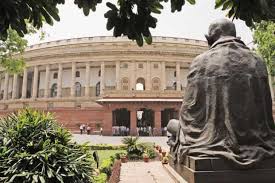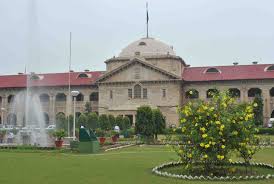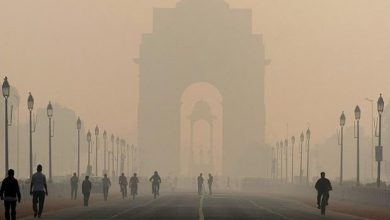Yamuna River: A Crisis of Water Shortage and Pollution

By Ram Dutt Tripathi
The Yamuna River, a sacred lifeline of northern India, is dying and fighting for survival.
Historically, the Yamuna was a major river that supported the agricultural and urban development of the regions it traversed, including the states of Haryana, Delhi, and Uttar Pradesh. It was a river that nourished fertile lands, provided drinking water, and facilitated trade. However, as urban centers along the river grew, its waters became increasingly over-exploited.
Today, the river’s water levels have dwindled, and pollution has risen to alarming levels. The fresh water that once flowed freely through the river now faces pressure from both its tributaries and the increasing human demand.
Flowing 1,376 kilometers from Uttarakhand’s Yamunotri Glacier, it sustains millions in Haryana, Delhi, and Uttar Pradesh. Yet, a dual crisis—dwindling freshwater and rampant pollution—threatens water security, agriculture, and ecosystems.
A Shrinking Lifeline: The Water Crisis
The Yamuna’s freshwater is under siege. Climate change shrinks the Yamunotri Glacier, supplying 15–20% of the river’s flow, with a projected 30–50% loss by 2050.
Erratic monsoons and droughts cut inflows, with Haryana’s Hathnikund Barrage down 10–15% since 2000.
Up to 90% of the river’s water is diverted for irrigation and urban use, starving its natural course.
Delhi, with over 21 million residents, relies on the Yamuna for 60–70% of its water. The 1994 water-sharing agreement grants Delhi 0.72 billion cubic meters yearly, short of its 1,150 million gallons per day need.
Summer flows at Wazirabad Barrage, often below 1,000 cusecs, spark shortages, driving groundwater extraction that depletes aquifers by 1–2 meters annually.
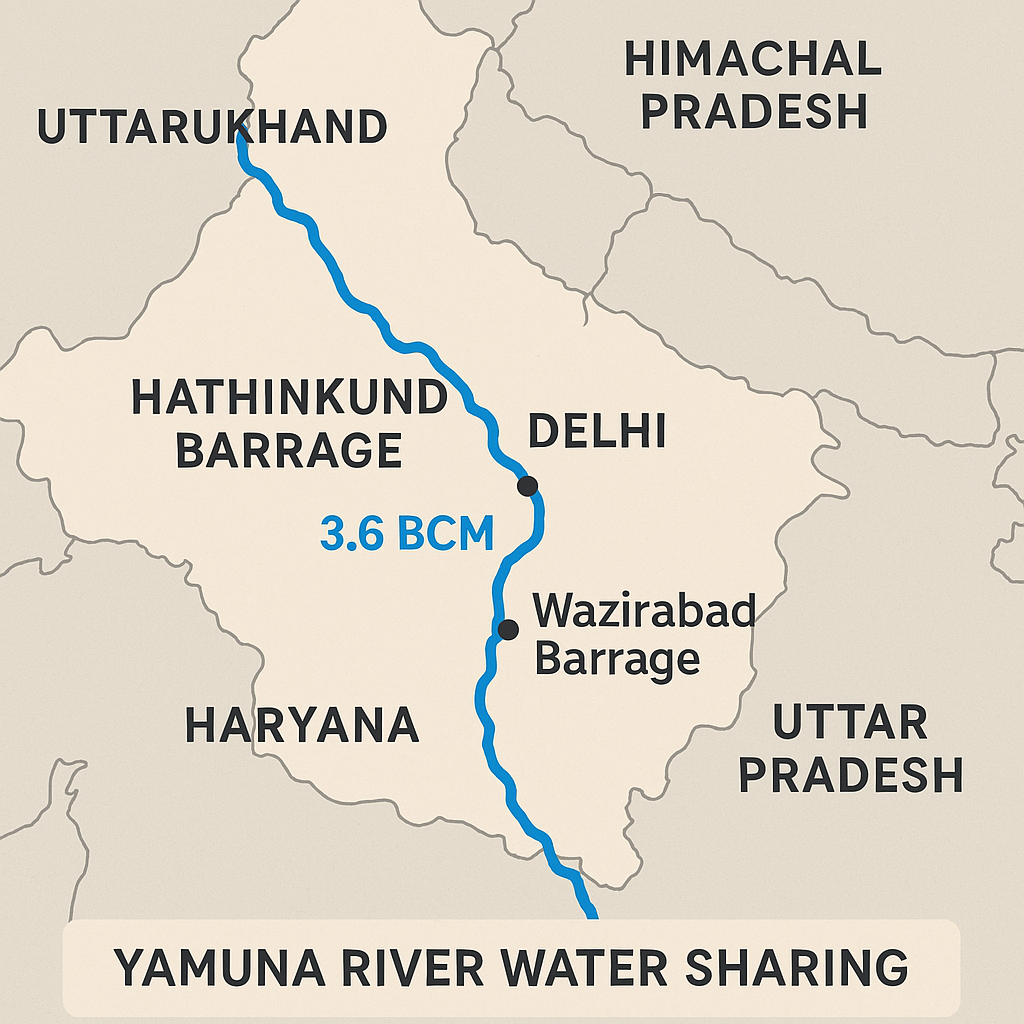
Drowning in Pollution
Pollution strangles the Yamuna. Beyond Uttarakhand, it absorbs untreated sewage, industrial waste, and agricultural runoff.
Delhi produces 3,800 million liters of sewage daily, with only 60% treated, flowing via 22 drains. In Delhi’s 22-km stretch, carrying 80% of the basin’s pollution, Biochemical Oxygen Demand (BOD) levels hit 50–70 mg/L—unfit for any use.
Industries in Haryana and Uttar Pradesh dump heavy metals like lead and chromium, while pesticides and fertilizers poison the water, leaving toxic sludge, froth, and dead fish.
Ripple Effects on Society and Nature
The Yamuna’s decline hits hard. Farmers in Haryana and Uttar Pradesh lose crops when canals dry up. Delhi’s urban poor face waterborne diseases like cholera.
Ecologically, the river is barren in parts—Gangetic dolphins have vanished, and wetlands shrink.
A Flicker of Renewal at Prayagraj
Though the Yamuna lies nearly lifeless from Delhi to Agra, gasping under pollution and depleted flows, it finds a remarkable resurgence in the holy city of Prayagraj.
This revival owes much to the Chambal River, which originates in Madhya Pradesh and merges with the Yamuna near Etawah in Uttar Pradesh. The Chambal, relatively cleaner and robust due to its forested catchment and lower industrial footprint, injects vital freshwater into the Yamuna, restoring its semblance as a living river. By the time it reaches Prayagraj, where it joins the Ganga at the sacred Triveni Sangam, the Yamuna regains enough flow and clarity to support spiritual rituals and local ecosystems, offering a poignant reminder of its latent resilience.
Solutions and Challenges
Revival efforts show promise but lack scale. The Namami Gange Programme funds sewage treatment and industrial regulations. Delhi aims to recycle 25% of its wastewater by 2030, while Uttarakhand restores tributaries. Campaigns like Yamuna Jiye Abhiyaan drive cleanups. Yet, weak enforcement stalls progress.
Interstate disputes, notably Delhi-Haryana water-sharing conflicts, fuel legal battles, underscoring the need for a revised 2025 agreement for equity and environmental flows.
Bold steps are critical:
- Enforce strict penalties for polluters with real-time monitoring.
- Revise the 2025 water-sharing pact for environmental flows and fairness.
- Promote afforestation and efficient irrigation to counter glacial retreat.
- Educate communities to restore the river’s sanctity.
Conclusion
The Yamuna’s crisis mirrors India’s water management failures. Without urgent action to curb pollution, manage demand, and restore balance, millions face a grim future. Cleaner tributaries like the Chambal hint at resilience—but only bold efforts will revive the Yamuna’s lifeblood.

